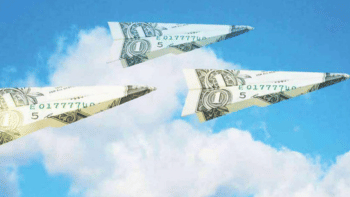What should be the priorities in the FY2022-23 budget?

The economy of Bangladesh has fared very well despite the impact of the Covid-19 pandemic. From 3.5 percent growth in FY2019-20, the economy recovered fast. The Bangladesh Bureau of Statistics (BBS) recently announced that in FY2020-21, Bangladesh's GDP growth was 6.9 percent, which is very high compared to all the other economies. There are huge debates on the official GDP numbers in Bangladesh—the new GDP number for FY2020-21 is no exception. That said, we are undoubtedly on the path of recovery since the reopening of the global economy and the roll-out of Covid vaccination. So, in FY2021-22, exports saw a strong growth. There was also a rise in imports.
However, many sectors and individuals are yet to overcome the Covid-induced difficulties. Following the outbreak of the pandemic in 2020, the government had rightly undertaken a large number of expenditures to mitigate the economic losses suffered by the people and businesses in various sectors. A number of stimulus packages and support measures were announced for businesses, agriculture sector, health sector and social safety net programmes. To operationalise the stimulus packages through commercial banks, the government created liquidity for the banks through expansionary monetary policy measures. However, though large businesses and the export sector were able to make a comeback, small enterprises could not do so due to their inability to access the funds through stimulus packages. The poor and low-income families are still struggling to make their ends meet. Cash support for the poor has not only been inadequate, but the distribution has been flawed due to wrong targeting. The current price hike of essential commodities has worsened their situation. Inflationary pressure is hitting the poor and fixed-income households hard.
The finance minister will soon formulate the third Covid budget, which will be presented at parliament in early June this year. In view of the current circumstances, the budget for FY2022-23 has to address a number of ongoing and emerging challenges while striving to move forward with speed and quality.
Whenever the budget is discussed, the first issue that comes to everyone's mind is taxation. The budget is about mobilisation of resources through various ways, the most important of which is tax on people's income. This resource, in turn, is used mainly for development, providing various services to citizens, and the salaries of government employees. Governments mostly depend on resources from their citizens—be it tax, bank borrowing, or sales of national savings certificates. They receive support from abroad at times. They also take loans from international sources. Given the important role of tax in financing economic activities of the government, its efficient collection and utilisation cannot be overemphasised.
Unfortunately, tax effort has been unsatisfactory in Bangladesh and continues to fail to reach its potential. The tax-GDP ratio is only about 9.5 percent. Budgetary targets of tax collection are never met. The budget speech of the finance minister refers to several measures. However, the outcomes of those measures are not reported back in the following year's budget speech. There is no information in the budget speech on the additional number of taxpayers every year. Indeed, there is a need for knowing the accurate number of eligible taxpayers. Different numbers are quoted on various occasions, without the source of those numbers. This is not a difficult task, and the National Board of Revenue (NBR) may conduct a study to identify and estimate the number of eligible taxpayers. Based on such a study, the NBR can also design its plan for bringing the eligible taxpayers under the tax net. They can create awareness among the new taxpayers. The prospective taxpayers can also be mentally ready when they learn about their tax-related responsibilities.
Since the outbreak of the pandemic, the need for a robust fiscal framework has been felt much more than before. Higher revenue mobilisation and judicious higher expenditure are tough objectives to be met within a system that is not strong enough to implement these and withstand obstructions in the way. Policymakers should not lose sight of reforms of the tax system and public institutions while designing the budget for the recovery. Capacity development of human resources and application of technology have to be a part of the reform measures.
On the expenditure side, the growth in government expenditure will have to take the inflationary pressure into account. Hence, the budget deficit will need to be lowered slightly than that of FY2021-22, which is set at 6.2 percent of GDP. Traditionally, it is targeted at five percent. In view of the need for higher public expenditures during the pandemic, it may be set at 5.5 percent of GDP in FY2022-23. Of course, due to the low expenditure capacity of the government, the budget deficit has usually been lower than the projection. As per data from the central bank, during July-September of FY22, the budget deficit was lower by Tk 4,428 crore, compared to that of the same period in FY21.
As for sectoral allocations, higher allocations are needed in a few sectors on a priority basis. Investment for the health sector is a high priority not only for dealing with the ongoing pandemic, but also for the overall strengthening of the health ecosystem in the country. Besides, recovering learning loss due to the pandemic, improvement of the education quality and skills development will also require more resources. Among others, rural infrastructure and social protection also deserve bigger allocations.
However, budget execution is what matters in the end. And it should be measured both for quantity and quality.
Dr Fahmida Khatun is executive director at the Centre for Policy Dialogue (CPD). Views expressed in this article are the author's own.


 For all latest news, follow The Daily Star's Google News channel.
For all latest news, follow The Daily Star's Google News channel. 



Comments